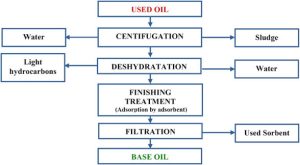 Transformer oil reconditioning and reclamation are essential processes used to restore the insulating and cooling properties of aged or contaminated transformer oil — extending the life of both the oil and the transformer.
Transformer oil reconditioning and reclamation are essential processes used to restore the insulating and cooling properties of aged or contaminated transformer oil — extending the life of both the oil and the transformer.
Why Restore Transformer Oil?
Over time, transformer oil degrades due to:
-
Oxidation
-
Moisture absorption
-
Contaminants (acids, sludge, carbon)
-
Electrical or thermal stress
If not addressed, degraded oil can lead to:
-
Reduced dielectric strength
-
Insulation breakdown
-
Transformer failure
Oil Reconditioning (On-Site Filtration)
Reconditioning is a physical treatment that removes moisture, dissolved gases, and particles from transformer oil without removing it from the transformer.
Process Includes:
-
Degassing
-
Dehydration (vacuum dehydration)
-
Filtration (micron filters)
Restores:
-
Breakdown Voltage (BDV)
-
Moisture content
-
Clarity & color
Oil Reclamation (Chemical Treatment)
Reclamation goes further — it chemically restores oil properties to like-new condition, typically by removing sludge, acids, and oxidation byproducts.
Process Includes:
-
Fullers earth / activated clay treatment
-
Chemical adsorption
-
Regeneration towers or batch treatment
-
Can be online or offline
Restores:
-
Acidity (neutralization number)
-
Interfacial tension (IFT)
-
Color (removes dark aging)
-
Oxidation stability
Comparison: Reconditioning vs Reclamation
| Feature | Reconditioning | Reclamation |
|---|---|---|
| Removes moisture | ✅ | ✅ |
| Removes particles | ✅ | ✅ |
| Removes sludge/acids | ❌ | ✅ |
| Restores full oil quality | Partial | Near-original |
| Chemical treatment | No | Yes (Fuller’s earth etc.) |
| Duration | Short (hours) | Longer (days) |
Typical Oil Improvements After Treatment
| Property | Before | After Reconditioning | After Reclamation |
|---|---|---|---|
| BDV (kV) | 20–30 | 40–60 | 60+ |
| Moisture (ppm) | 50–100 | <10 | <10 |
| Acidity (mg KOH/g) | 0.3–0.6 | Same | <0.1 |
| IFT (mN/m) | <15 | Slightly improved | >40 |
| Color | Dark brown | Light brown | Pale yellow |
Regulations & Environmental Benefit
-
Reduces hazardous waste generation
-
Avoids full oil replacement costs
-
Meets environmental standards (IEC, IEEE, EPA, ISO 8217)
Recommended Tests Before & After Treatment
| Test | Purpose |
|---|---|
| BDV Test | Measure insulation strength |
| Moisture (Karl Fischer) | Detect water content |
| Acidity Test | Check oil aging level |
| Interfacial Tension (IFT) | Detect oil cleanliness |
| Color & Visual | Evaluate clarity and contamination |
| Dissolved Gas Analysis | Monitor internal faults |

